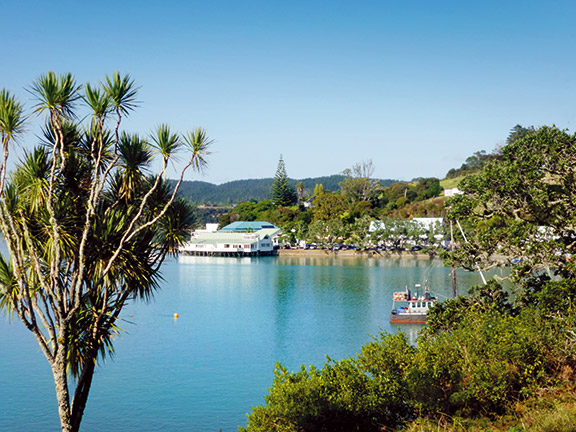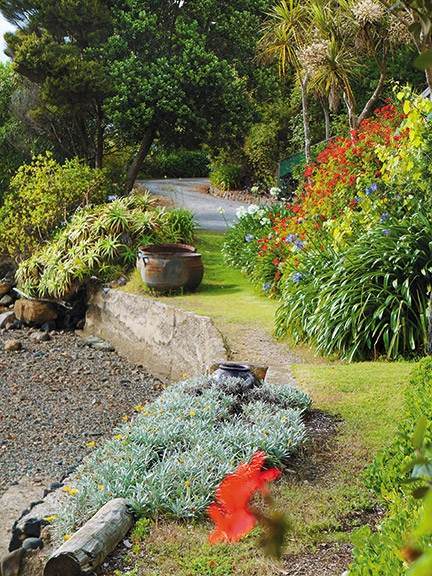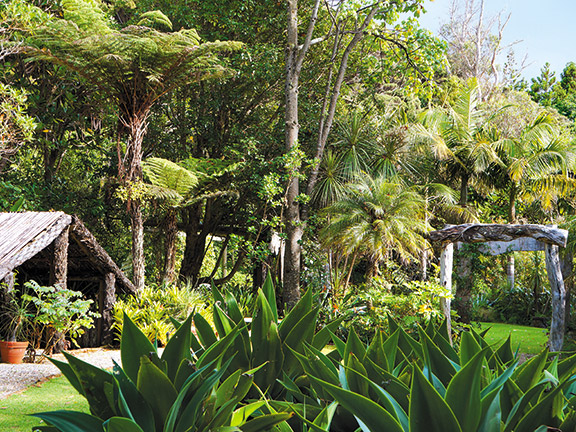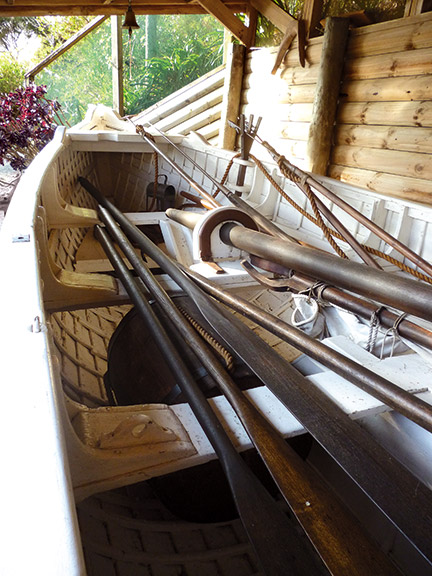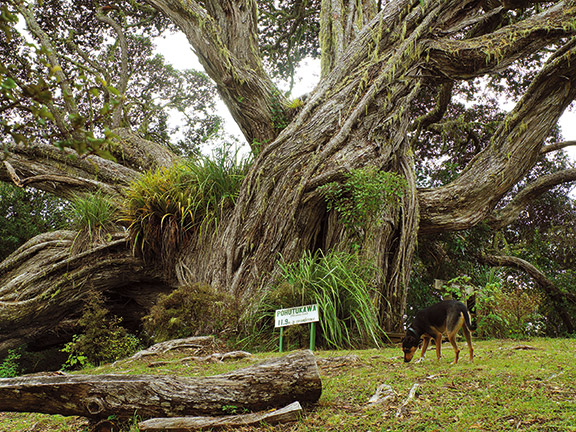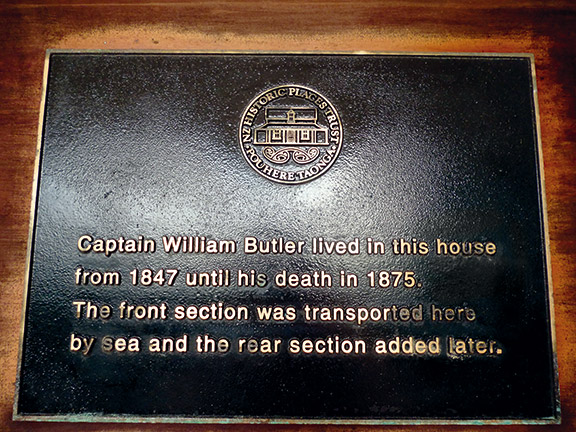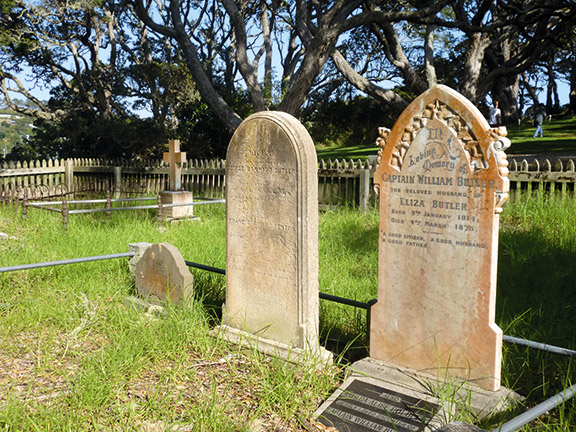Jan Ferguson and I stood on the Butler Point promontory, transfixed by the view of the harbour that connected us to the village of Mangonui. On that high bright morning in June, the sea was so calm it looked as if it might have been covered in Glad Wrap.
Jan voiced her thoughts. "Hard to believe," she says, "but, in the early 1800s, this whole area would have been seething with activity. Whaling ships used to cram into the harbour, maybe twenty at a time and the town was a ribald, unruly, desperate sort of a place."
Standing there on that serene morning, it was too big a leap for the imagination, but as we continued our walk around the property, that amazing time in New Zealand's history began to echo through my mind.
Jan's late father, Dr Lindo Ferguson (CBE, local politician, public servant, ophthalmologist, and philanthropist) with his wife, Laetitia, bought this striking 28-hectare peninsula in 1970. It included an historic homestead, built in 1847 by William Butler, a whaling captain turned merchant, who installed his wife and 13 children there and proceeded to amass a large fortune from provisioning whaling ships and exporting flax and kauri timber and gum.
Butler certainly knew how to pick a spot. The undulating peninsula, surrounded by sea on three sides, was a stunning place to live. It still is today. The Butlers' house, which has been restored by the Fergusons and part of it filled with period furniture, is now a heritage building of national significance.
"From the moment Dad clapped eyes on the old house he knew it was an historical gem," says Jan. "It was in a very bad state. He called it his 'folly', but really he brought the whole place to life. Before he came along, the story of Butler Point had never been told."
Now that her father has passed on, Jan is making the legacy of Butler Point and on-going research into the area's whaling history her life's work.
Northland’s whaling days 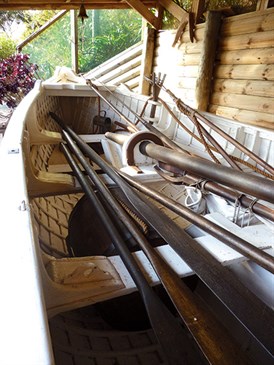
She led me past the torturous trunks of giant pohutukawa trees, thought to be over 600 years old, and around the leaning gravestones of William Butler and several of his sons.
Under a shelter just outside the museum, a 30-foot, open whaleboat from the early 1900s is housed. It is built of kauri and pohutukawa and now completely restored.
"My father found it on the Kaipara," she says, rubbing her hand along its curving hull. "He had it restored and fitted it with original equipment, so now it helps bring to life the stories of the whalers — how audacious and brave they were, how they risked their lives at every turn."
We examined the long oars, ropes, the hand-held harpoons, rope-barrels, lances, and a masted sail.
"There were six men in a boat," Jan told me, "three rowing on one side and two on the other, then a man at the stern manning the steering oar and giving orders. They must've all been incredibly strong to wield those oars for hours on end and when they followed a whale, to get close enough to harpoon it."
"The whale would charge off, attached by an embedded harpoon to 1800 feet of rope that uncoiled from those barrels. When the tether had played out, one end was wrapped around the bollard and the boat took off like a jetski on what was known as the 'Nantuket slay ride'.
"Can you imagine it — no control, they just hung on until the whale got tired. Sometimes a whale would dive or roll and the rope had to be cut in a very big hurry. It was incredibly dangerous. Most of those men couldn't even swim," she says.
Whaling artefacts
The captain may have made his money at Butler Point but, 130 years on, it was not wealth that Lindo Ferguson set out to amass. Instead, he added to his very busy life a passion for collecting whaling artefacts. The result is a fascinating assortment that is perhaps the most significant collection in private ownership in New Zealand. It is displayed in a purpose-built museum on the property.
Jan pointed out the reconstructed tryworks (blubber-rendering pots), the range of harpoons, and some exquisite examples of scrimshaw. Among the memorabilia are a full set of ships surgical instruments, old prints, photographs, and models of whalers and whale boats.
I also spotted several more modern Japanese and Norwegian harpoons — nasty-looking weapons with explosive heads. Given my vigorous anti-whaling stand, they curdled my stomach and I said so.
Jan shares that sentiment. "And yet," she says, "whalers of the old days can't be blamed for what they did. They needed what the whale could provide. Whale oil lit the cities of the world and there were so many other products that relied on bits of whale. Today it is a completely different story. Now we have so much to learn from the conservation of whales."

There is also much to be learnt about the old days of whaling. As part of her research, Jan Ferguson and documentary film-maker Caroline Fitzgerald have been invited to North America this month to join the 38th voyage of the only surviving wooden whaling ship in the world.
The Charles W. Morgan was one of a fleet of 2700 American whaling vessels and during the 37 whaling expeditions she made around the world in her 80 years of service, she weighed anchor four times in the Mangonui Harbour. She was thought to be the last whaling ship to visit New Zealand in 1894.
This marvellous old girl has just undergone a ten-million-dollar rebuild and will sail up the coast of New England to Boston and back, stopping at ports along the way. Where once the cargo of the old sailing ship was whale oil, bone, and baleen, her cargo in 2014 is more along the lines of history and knowledge.
Apart from the sheer curiosity for the days of yore, the voyage is being undertaken to raise awareness for the vastly different attitudes we hold today. Jan and Caroline hope their experiences on board will add atmosphere and understanding of those daring days of whaling in old New Zealand.
For the latest reviews, subscribe to Motorhomes, Caravans & Destinations magazine here.

